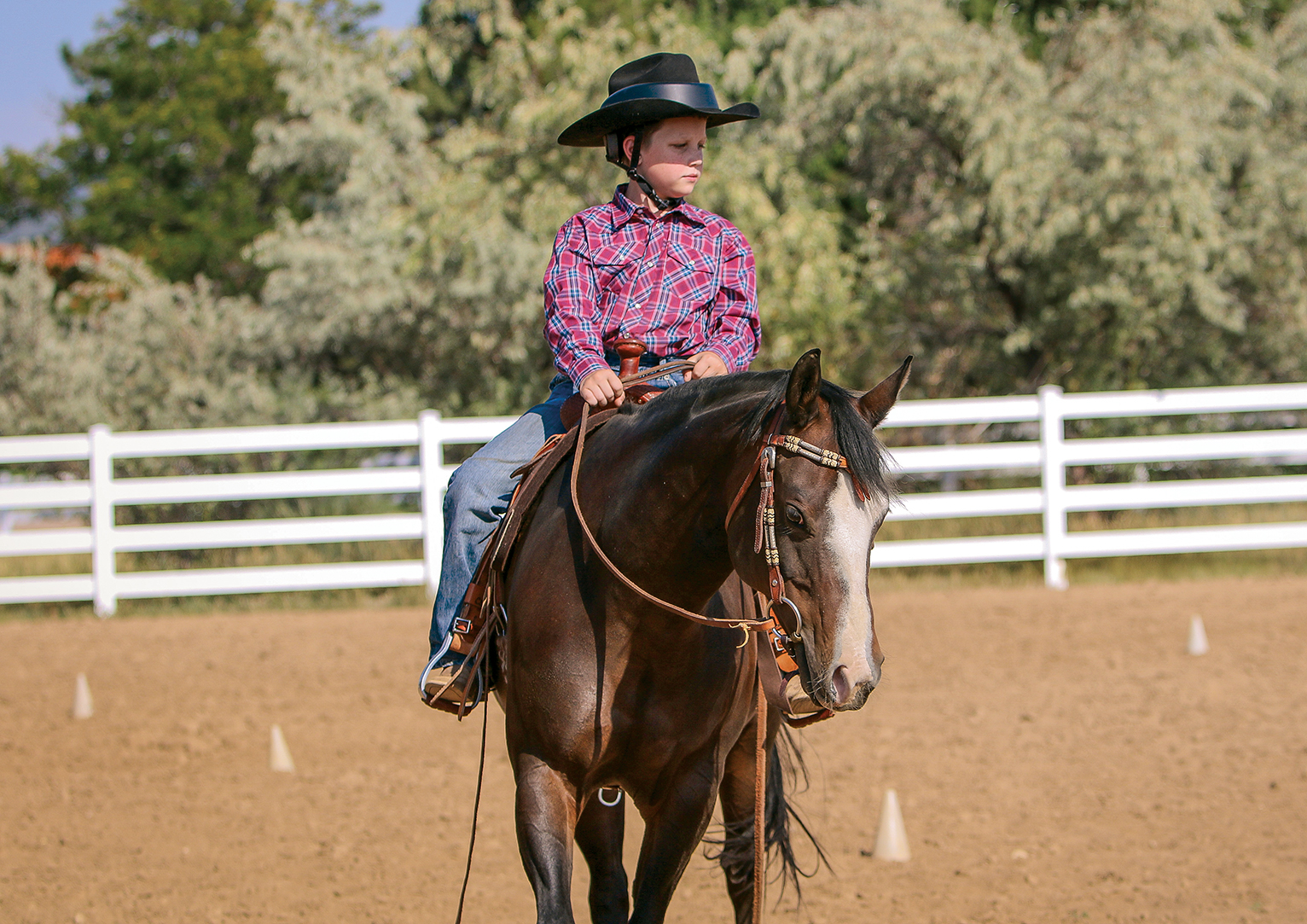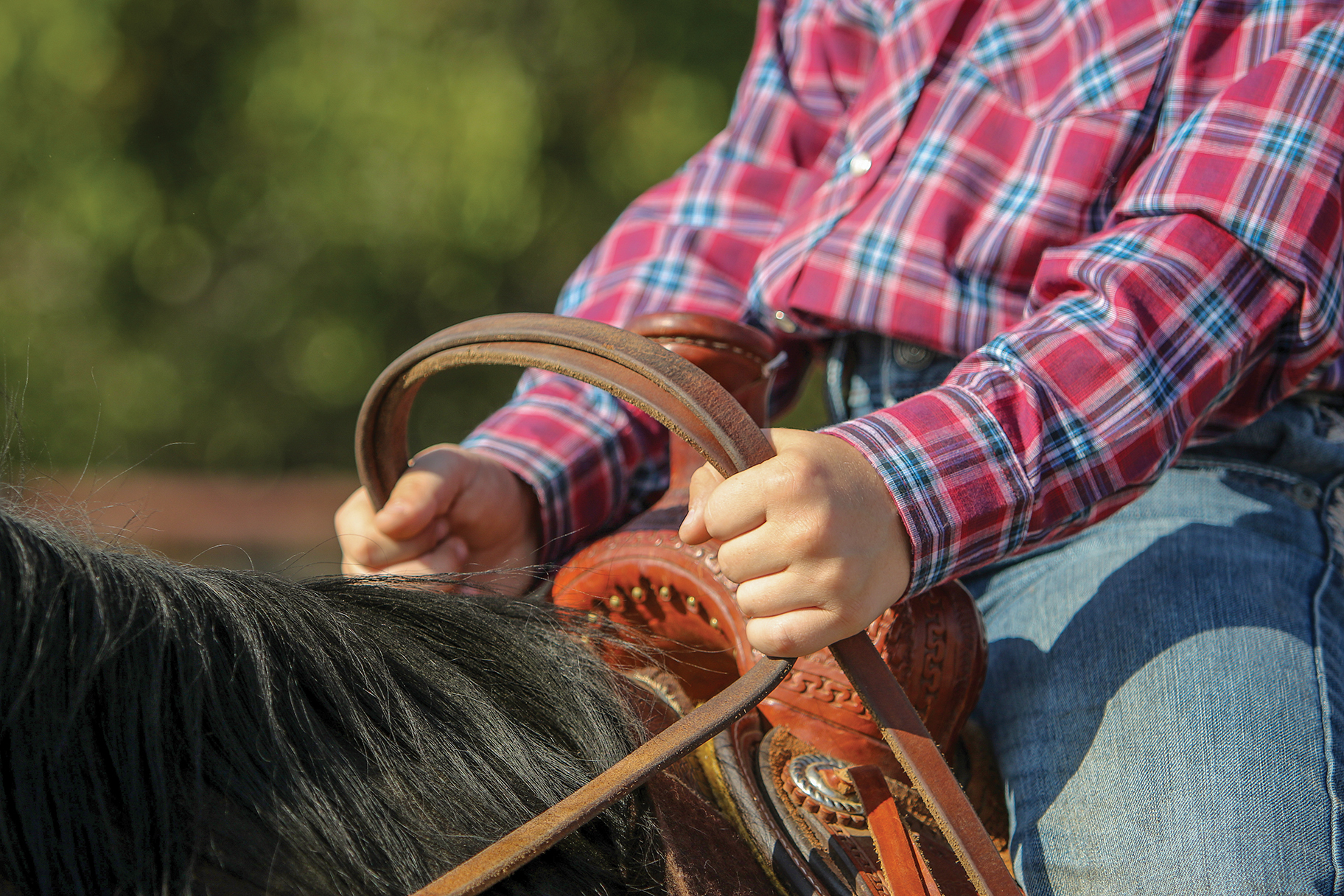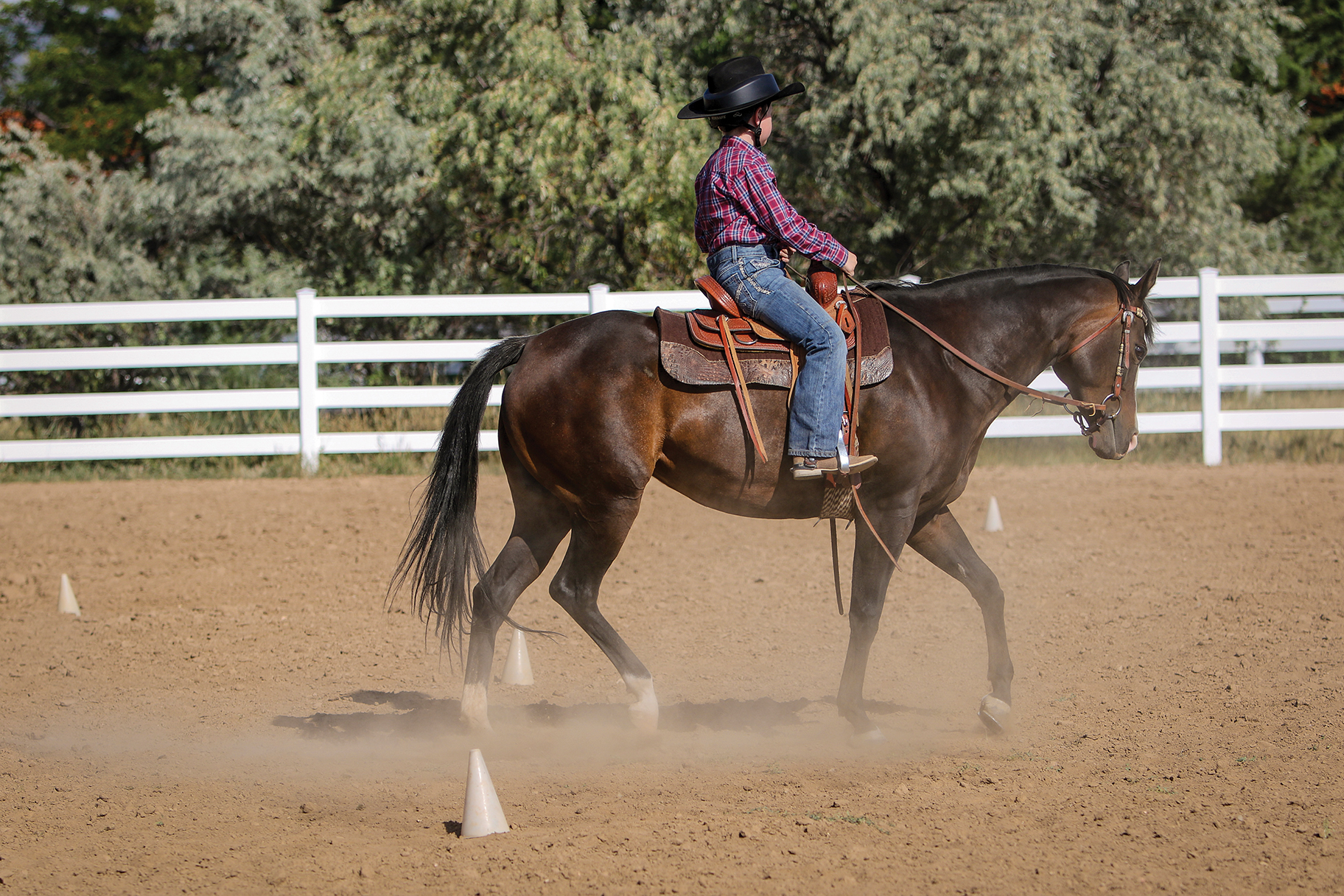With horses, safety is paramount. A key part of being a confident, effective rider is knowing your horse guides willingly on command. If he does, you’ve established one of the foundations for both horse-and-rider safety and effective horsemanship.
[MORE CONFIDENCE: Be A Bolder Rider]
My Crazy Cones exercise will boost that guidability. By keeping your horse listening and guessing, it renders him lighter and lighter to your rein cues. As you weave him in and around the cones, the lateral bending creates suppleness. The back-and-forth motion loosens his jaw, neck, shoulders, and ribs as you drive him forward.

Jennifer Paulson
Your commands in this exercise must be clear and timely. You must use your brain to decide where and when to switch back and forth, your hands to direct your horse’s head and neck, and your legs to push him forward. All this improves your horsemanship.
Ultimately, this simple, repetitive exercise helps you and your horse begin to function like a well-oiled machine.
[MORE CONFIDENCE: 8 Tips to Boost Trail Riding Confidence]
Setting Up
You’ll need eight to 10 plastic training cones and a safe area with good footing in which to set them up.

Distribute the cones so they’re roughly 10 feet apart—that is, enough room to be able to bend your horse around and through them at a walk and a trot. Just scatter them in a random pattern—the distances don’t have to be exact.
You’ll be riding two-handed, so outfit your horse in a snaffle (or the bit he responds to best).
Ride the Cones
Begin at a walk. Squeeze with your legs to create a forward pace. Hold the reins with both hands, positioning them low and wide. Choose a path through the cones that requires repeated turning and circling back, making sure to go roughly equally to the right and the left.

Jennifer Paulson
As you turn to, say, the left around a cone, guide your horse’s nose with direct pressure on the left rein as you bring the right (indirect) rein against his neck to reinforce the leftward movement.
At the same time, press with your inside (left) leg to keep his butt moving and to help him arc around the cone.
Reverse all cues when you bend/turn him to the right. Use both legs as needed throughout to maintain forward energy.
When you’ve both become proficient at the walk (take as much time as you need), progress to a brisk trot. This will up the difficulty, forcing you to think fast to plot your course through the cones. You’ll also need to be especially clear and precise in your cueing as you ride this way and that in an ever-changing pattern (this is what keeps your horse guessing and attentive to your cues).
[MORE CONFIDENCE: Cure Your Horse Show Jitters]

Jennifer Paulson
The length of time you spend performing this exercise depends on how fast your horse decides to respond without resistance to what you ask of him. The first time it might take him 10 minutes; as you and he progress, it could take as little as five minutes or less for him to become soft and willing.
The more often you ride this exercise, the more confident you’ll become in your horse’s willingness to be guided on command.

Jennifer Paulson
Bonuses
This exercise makes a great warm-up routine even if your horse is already proficient at being guided. It can also serve as an introduction or refresher for neck reining; as your horse progresses, you can move from using two hands to one and guide him just as effectively.
[MORE CONFIDENCE: Train Your Brain, Boost Your Riding]
Also, because it moves your horse’s feet in all directions, Crazy Cones can serve as an excellent way to work the “fresh” out of him without a fight.
Finally, because it requires a lot of lateral flexion, Crazy Cones also sets the stage for the vertical flexion required by collected work.






